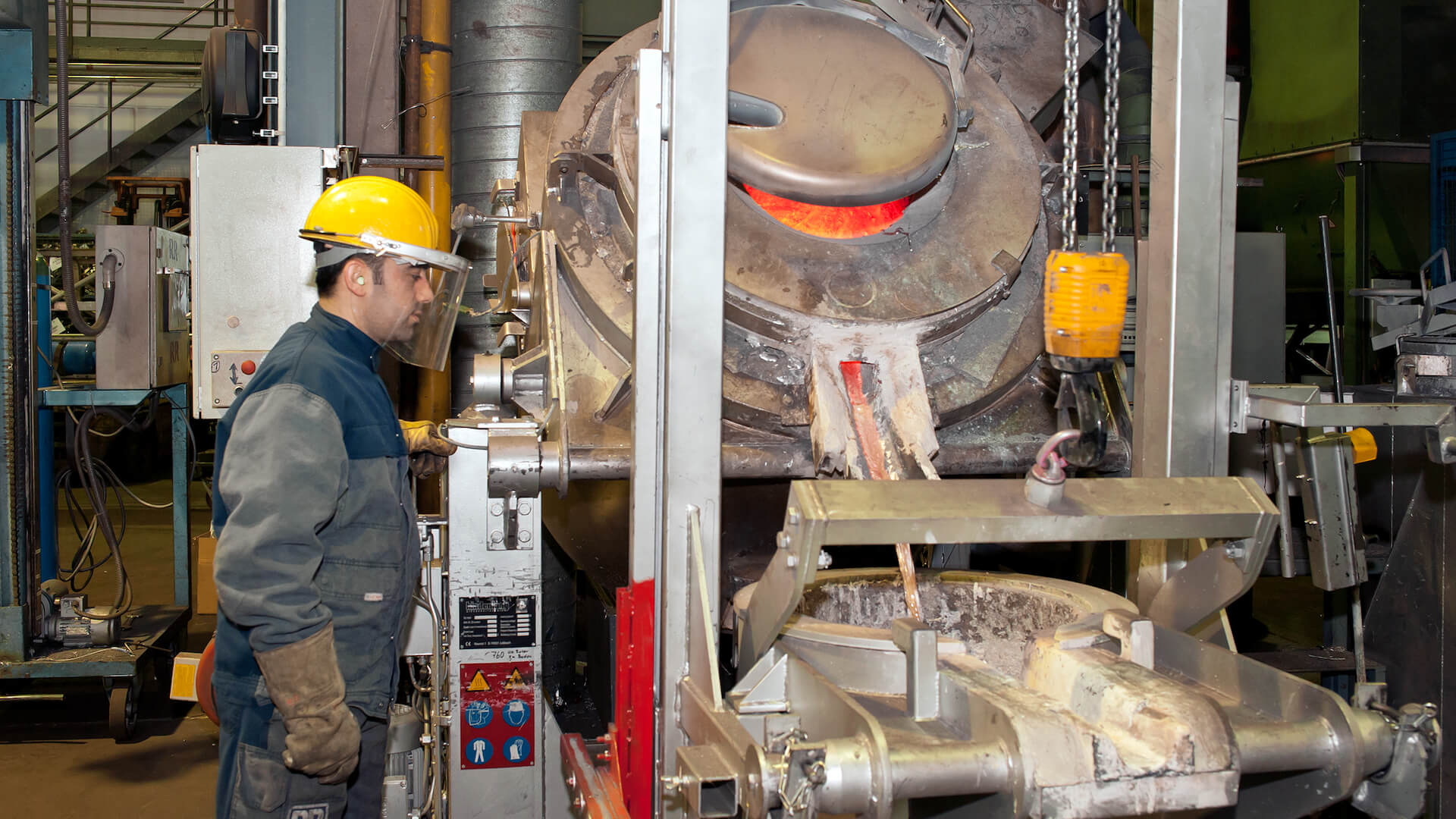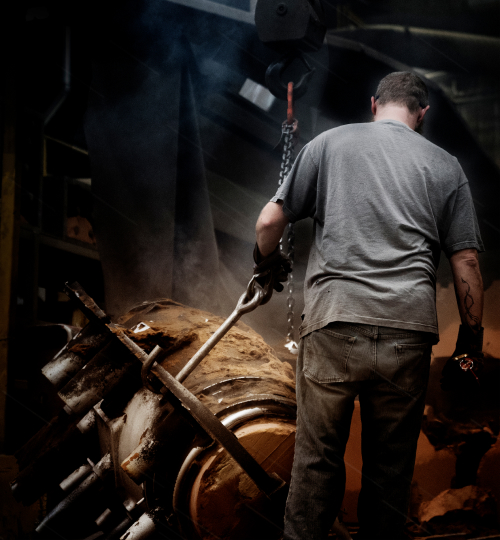Why Aluminum Foundry is the go-to choice for construction applications
All Regarding Aluminum Foundry: Key Uses and Its Influence On Item Advancement
Aluminum foundries are vital in modern-day production, particularly in industries like automotive and aerospace. They use sophisticated techniques to develop lightweight, durable components that enhance performance. The versatility of aluminum additionally aligns with sustainability initiatives, making it a preferred product. Nevertheless, the recurring innovations in casting techniques and their effects for item development raising essential inquiries. What future improvements might improve the landscape of aluminum foundries and their applications?
Overview of Aluminum Foundries
Aluminum foundries act as crucial centers in the metalworking industry, focusing on the casting of aluminum and its alloys. These centers use various approaches, including sand casting, pass away casting, and financial investment casting, to change raw aluminum into functional kinds. Each casting method uses distinct advantages, accommodating different job requirements ranging from little parts to huge structural aspects.
The foundries operate through a meticulous process that begins with melting aluminum, adhered to by putting the liquified steel right into mold and mildews. After cooling, the castings undertake finishing processes, which might include machining and surface treatment to satisfy specific requirements.
Quality control is extremely important, ensuring that the end products fulfill sector requirements and customer expectations. On top of that, aluminum foundries typically stress sustainability by recycling scrap aluminum, thereby lowering waste and saving sources. This dedication to effective production and environmental responsibility placements aluminum foundries as vital contributors to the manufacturing landscape.

Secret Applications of Aluminum Castings
Aluminum castings offer vital duties in numerous markets, especially in automobile and aerospace industries. In the automotive sector, they add to lightweight structures and effective efficiency. Likewise, aerospace part production depends on aluminum castings for their toughness and corrosion resistance, crucial for high-performance applications.
Automotive Industry Applications
In the vehicle sector, aluminum castings play an important function in enhancing automobile performance and performance. These castings are extensively utilized for parts such as engine blocks, transmission real estates, and suspension parts. Their light-weight nature adds to decreased vehicle weight, which in turn improves fuel economic situation and handling. Furthermore, aluminum's excellent thermal conductivity permits efficient heat dissipation, vital for high-performance engines. The corrosion resistance of aluminum also extends the lifespan of vehicle components, decreasing upkeep costs. Innovations in casting technologies make it possible for the manufacturing of intricate shapes, optimizing the layout and capability of parts. Overall, aluminum castings are essential to modern-day auto engineering, supporting technology and sustainability in vehicle design.
Aerospace Part Production
The aerospace industry significantly depends on aluminum castings for a series of vital elements because of their advantageous residential or commercial properties. Lightweight yet strong, aluminum castings enhance fuel performance and total performance in airplane layout. Components such as engine places, structural structures, and touchdown gear are frequently created utilizing aluminum casting techniques, making it possible for producers to accomplish intricate geometries while preserving architectural stability. The high resistance to rust and thermal homes of aluminum additionally contribute to the durability and integrity of aerospace parts. In addition, developments in casting innovations, such as precision casting and 3D printing, have actually broadened the capacities of aluminum in this sector. Eventually, aluminum castings play an essential duty in conference stringent safety and security standards and efficiency needs in modern-day aerospace applications.
Benefits of Making Use Of Aluminum in Manufacturing
While numerous materials are available for production, aluminum stands apart as a result of its special mix of homes that boost effectiveness and performance. One considerable benefit of aluminum is its light-weight nature, which contributes to reduced power consumption and boosted fuel performance in various applications. Furthermore, aluminum displays superb deterioration resistance, prolonging the lifespan of products and reducing upkeep costs. Its high thermal and electric conductivity makes it appropriate for warm exchangers and electric elements, while its malleability permits functional styles and elaborate forms.
Aluminum is recyclable, promoting sustainability in producing procedures. This reusability not only saves sources yet additionally lowers the carbon footprint connected with production. The flexibility of aluminum to various alloys even more enhances its energy in diverse sectors, from automotive to consumer electronics. Collectively, these qualities make aluminum an optimal option for suppliers looking for to stabilize efficiency, cost-effectiveness, and ecological obligation.
Developments in Casting Strategies
Recent innovations in casting methods have substantially changed the aluminum factory market. The integration of 3D printing technology has enabled much more complicated styles, while improved alloy formulas boost performance and toughness. These innovations are driving efficiency and increasing the applications of aluminum in numerous markets.
3D Printing Assimilation

Improved Alloy Formulations
Advancements in aluminum shop innovation have actually resulted in the development of enhanced alloy formulations that boost casting performance and material homes. These ingenious solutions usually integrate components such as silicon, magnesium, and copper, which enhance stamina, ductility, and corrosion resistance. By fine-tuning the structures, makers can achieve details features customized to diverse applications, from vehicle to aerospace markets. In addition, these improved alloys facilitate much better fluidity throughout his response the casting procedure, reducing defects and boosting surface area coating. Because of this, the performance of manufacturing is considerably raised while maintaining strict quality standards. This development in alloy growth not just streamlines production however additionally supports the production of lighter, more powerful elements, ultimately progressing product development and efficiency.
Influence on Aerospace and Automotive Industries
The significant impact of aluminum foundries on the aerospace and automotive sectors can not be overemphasized. Aluminum alloys, recognized for their light-weight and high stamina, have changed the design and production processes in both industries. In aerospace, the reduction in weight straight correlates to sustain efficiency, permitting for longer flights and lower emissions. Components such as airplane frames, wings, and engine parts take advantage of aluminum's exceptional exhaustion resistance and rust resistance.
In the automotive market, aluminum foundries contribute to the manufacturing of lighter vehicles, improving efficiency and fuel economy while satisfying strict ecological regulations. Using aluminum in engine blocks, body panels, and wheels has actually raised considerably, driven by customer demand for extra reliable cars. Furthermore, developments in casting techniques have actually enhanced the precision and performance of parts, allowing suppliers to create more integrated and complicated styles, consequently cultivating developments in both industries.
Sustainability Practices in Aluminum Foundries
Aluminum foundries are significantly accepting sustainability techniques to minimize their environmental footprint while fulfilling the expanding demands of the aerospace and vehicle sectors. These methods include the application of energy-efficient modern technologies, such as electric melting heating systems and advanced heat healing systems, which considerably reduced energy usage (Aluminum Foundry). In enhancement, numerous foundries are focusing on making use of recycled aluminum, which calls for much less power and causes reduced greenhouse gas exhausts compared to main aluminum manufacturing
Water conservation campaigns are also gaining grip, with foundries utilizing closed-loop systems to reduce water usage and avoid contamination. In addition, waste management approaches, including reusing scrap and decreasing unsafe waste, add to a much more sustainable procedure. By adopting these techniques, aluminum foundries not just enhance their competitiveness but also align with worldwide sustainability goals, ultimately sustaining a round economic climate and fostering innovation in eco-friendly manufacturing processes.
Future Trends in Aluminum Casting Modern Technology
As the demand for lightweight and resilient materials remains to increase, developments in casting technology are poised to improve the aluminum market. Advanced methods such as 3D printing and automated casting processes are obtaining traction, enabling a lot more complicated geometries and reduced product waste. The combination of man-made knowledge and artificial intelligence is additionally enhancing high quality control and process optimization, decreasing flaws and enhancing performance.
The development of new aluminum alloys is increasing the application range of cast products, making them suitable for sectors from auto to aerospace. Enhanced reusing methods are expected to further decrease ecological impacts, lining up with worldwide sustainability goals.
Furthermore, original site using clever sensing units in casting processes is prepared for to make it possible for real-time monitoring, making sure greater precision and consistency. These patterns indicate a transformative era in aluminum casting technology, enabling producers to meet developing market needs while focusing on sustainability and development.
Regularly Asked Concerns
Just How Is Aluminum Recycled After Use in Products?
Aluminum recycling includes accumulating, arranging, and melting utilized aluminum products (Aluminum Foundry). The liquified metal is then cast right into brand-new types, lowering power consumption and protecting all-natural sources, making it a reliable and sustainable process for aluminum healing
What Precaution Are Applied in Aluminum Foundries?
Precaution in aluminum foundries consist of proper air flow systems, individual safety equipment, routine safety and security training, devices upkeep procedures, and emergency situation response plans, all focused on reducing dangers connected with high temperatures and harmful materials during production.
How Do Aluminum Foundries Ensure Quality Assurance?
Aluminum foundries execute strenuous quality assurance processes, consisting of material evaluations, temperature monitoring, and dimensional checks. These steps ensure product consistency, minimize flaws, and stick to industry requirements, ultimately boosting client complete satisfaction and functional performance.
What Prevail Difficulties Dealt With by Aluminum Foundries?
Aluminum foundries generally deal with obstacles such as keeping consistent top quality, see this page taking care of production costs, making certain timely shipment, resolving devices upkeep, and adapting to developing industry policies. These variables can greatly impact general functional efficiency and profitability.
Just How Does Aluminum Casting Affect Product Weight?
Aluminum casting considerably lowers item weight because of aluminum's low thickness contrasted to various other metals - Aluminum Foundry. This light-weight characteristic improves design versatility, enhances gas effectiveness in transportation applications, and provides benefits in numerous industries requiring weight-sensitive components